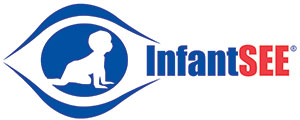Pediatric Vision Exams

More than 60% of children who experience difficulties with learning suffer from one or more problems with their vision. Far too often, these eye coordination and/or eye movement disorders are not detected because the child can see the letters on the eye chart and everyone incorrectly assumes the child's vision is fine. This can cause a great deal of needless frustration for children and their parents as they struggle to figure out why their child continues to struggle with reading and learning despite all best efforts to help them.
Signs that may indicate a vision problem:
- Headaches with near work
- Difficulty copying from the board
- Skips or repeats lines while reading
- Reverses letters or words
- Double vision, or "the words run together"
- Below grade level in reading
- Slow/difficult time reading
- Covers one eye when doing close work
- Complains that words move around on the page.
- Uses finger as a place-marker when reading
- Squinting one or both eyes
- Fatigue, frustration, stress associated with schoolwork/homework
- Short attention span or daydreaming
- Smart in everything but school
- Frequent rubbing or blinking of the eyes
- Avoids close work
- Vision is worse at the end of the day
- Labeled ADD/ADHD, LD or dyslexic
Click Here to take the full Vision Quiz >>
Comprehensive Eye Exams Recommended for School-Aged Children
The American Optometric Association recommends that school-aged children who have no symptoms have a comprehensive eye examination performed by an eye care professional every two years, while children who have symptoms or are at additional risk for vision problems be examined annually or as recommended.
Click Here to Read More on Comprehensive Eye Exams...
No-Cost Vision Assessments for Infants
 Cooing, sitting up and crawling are signs that your baby is growing. Your baby’s vision has stages of development too, but usually there are no signs to mark the progress. This is why Dr. Dibler is a provider of the no-cost InfantSEE™ vision assessment.
Cooing, sitting up and crawling are signs that your baby is growing. Your baby’s vision has stages of development too, but usually there are no signs to mark the progress. This is why Dr. Dibler is a provider of the no-cost InfantSEE™ vision assessment.
InfantSEE™ Eyes-To-The-World is a special program sponsored by tThe American Optometric Association and Jonhson and Johnson. It encourages parents to include a trip to the optometrist in the list of well-baby check-ups. The no-cost assessments are available to infants and toddlers six to twelve months of age.
Catching vision problems early on, helps to assure that vision problems won’t interfere with your child’s overall development. InfantSEE™ is a public health program designed to ensure that eye and vision care become an integral part of care.
Former President Jimmy Carter is serving as honorary national chair and spokesperson for this program. After two of his grandchildren were diagnosed with Amblyopia, Carter shares his concerns with parents:
“As parents, we regularly take our children to the dentists to help prevent cavities. Likewise, we should take our babies to the optometrist to help prevent potential eye and vision problems.”
Call us today to schedule your infant’s first vision care appointment!

